Understanding Opossums: Their Role in Your Yard
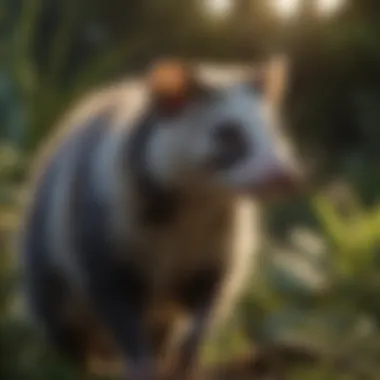
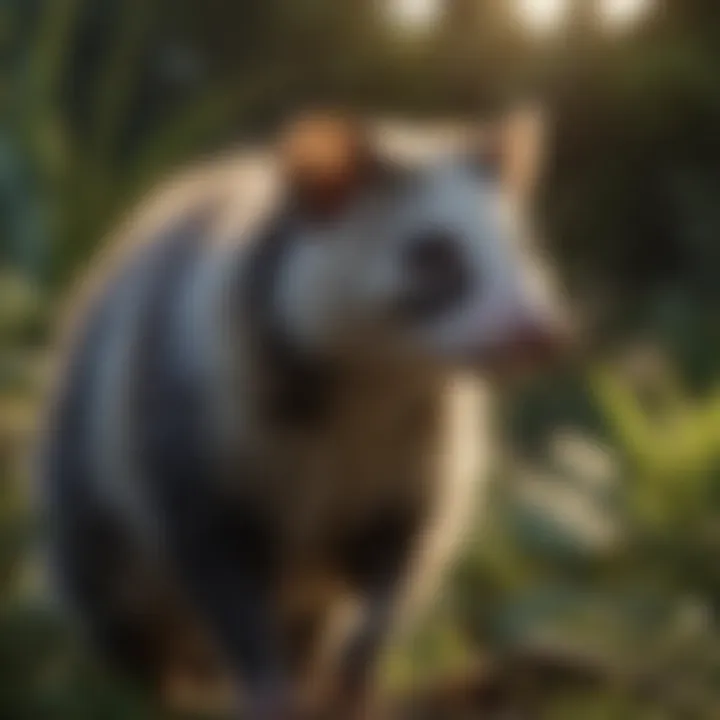
Intro
Opossums are often seen as an odd presence in suburban and urban environments. Their nocturnal habits and unique appearance can raise questions for homeowners. Are these marsupials harmful? How do they impact the yard and local ecosystem? To demystify this matter, it is crucial to explore their traits, benefits, and challenges.
Understanding opossums is not just about identifying them. It's about recognizing their role in our yards and communities. As we explore their ecological significance, we will see that these creatures carry a critical balance within our gardens and neighborhoods. Each aspect, from their life cycle to their potential for coexistence, contributes to a broader understanding of wildlife dynamics in urban settings.
Understanding the Pest
Identification
Identifying an opossum is relatively straightforward, thanks to their distinctive features. An adult opossum generally weighs between four to twelve pounds and measures about thirty to forty inches, including the tail. Their fur is predominantly grayish, with a pointed snout and large ears that resemble those of a rat. Additionally, their appearance includes bare feet, which aids in climbing and navigating various terrains. Understanding these traits can help distinguish them from more well-known pests, such as rats or raccoons.
Life Cycle
The life cycle of opossums consists primarily of three stages: gestation, juvenile development, and adulthood. Gestation lasts about twelve days, making opossums unique among mammals. After birth, the tiny young crawl into the mother’s pouch and stay there for up to eight weeks for protection and nourishment. Once they emerge, they continue to ride on the mother's back before becoming independent.
The average lifespan of an opossum is around two to four years in the wild, although some may survive longer in protected conditions. Understanding their life cycle is essential for homeowners who may encounter them during their various life stages.
Pest Prevention Strategies
Environment Modification
To discourage opossums from taking residence in your yard, it is necessary to modify the environment. Remove food sources like pet food, birdseed, and fallen fruits. Keep garbage cans sealed tightly to avoid attracting these marsupials and their scavenger friends. Clearing dense vegetation and tall grass can also reduce shelter opportunities.
Physical Barriers
Physical barriers are a direct approach to controlling opossum presence. Installing fences, at least four to five feet high, can deter them from entering gardens. Ensure these barriers are buried a foot deep to prevent digging under them. Using wire mesh or hardware cloth around gardens can also help prevent access and protect valuable plants.
Control Methods
Chemical Control
When prevention fails, chemical control can be considered. However, applying chemical solutions should be approached with caution. The use of repellents may deter opossums, but these products should be animal-friendly and environmentally safe. Always follow the manufacturer's instructions for best practices.
Biological Control
Biological control entails introducing natural predators or encouraging existing ones in your area. For instance, domestic dogs can act as natural deterrents, as their presence may dissuade opossums from visiting your yard. It is also essential to encourage the population of beneficial wildlife that might keep opossum numbers in check.
"Opossums are often misunderstood, but they play a vital role in controlling pests in your yard."
Being aware of the ecological role of opossums can help reshape the perception of these marsupials. Learning to coexist with them can lead to beneficial outcomes for both humans and wildlife. Understanding their presence transcends mere identification, becoming a matter of harmonizing urban living with nature.
Prolusion to Opossums
Opossums are often overlooked creatures that inhabit many residential areas. Understanding their biology and behavior is important as it helps homeowners appreciate their role in the ecosystem and the potential impact they can have in gardens and yards. Recognizing these marsupials can facilitate a harmonious coexistence, as they have distinct advantages and some drawbacks when sharing space with humans.
Biological Overview
Physical Characteristics
Opossums are relatively small, with an average weight ranging from 4 to 14 pounds and a length of about 25 to 33 inches, including their tail. They are notable for their pointed snouts and prehensile tails, which aid in climbing. Their fur is mostly gray or white, and they have exposed ears, which distinguish them from other mammals. This unique appearance allows for easy identification and fosters curiosity among those residing in areas where they are present.
Life Cycle
The life cycle of opossums is interesting and contributes significantly to their population dynamics. Female opossums can have two litters per year, generally containing about six to eight young. After a gestation period of approximately 12 days, the tiny, undeveloped babies migrate to the mother’s pouch for about two months. An important aspect of their life cycle is that many young do not survive past infancy. This high mortality rate necessitates a healthy reproductive strategy. Understanding this cycle can provide insights into managing their presence in yards and properties.
Habitat Preferences
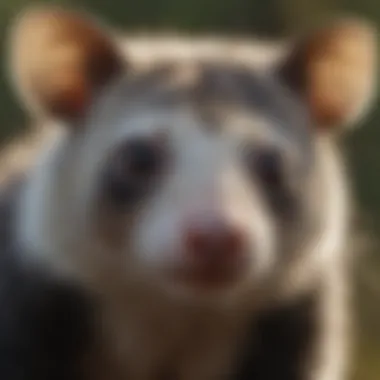
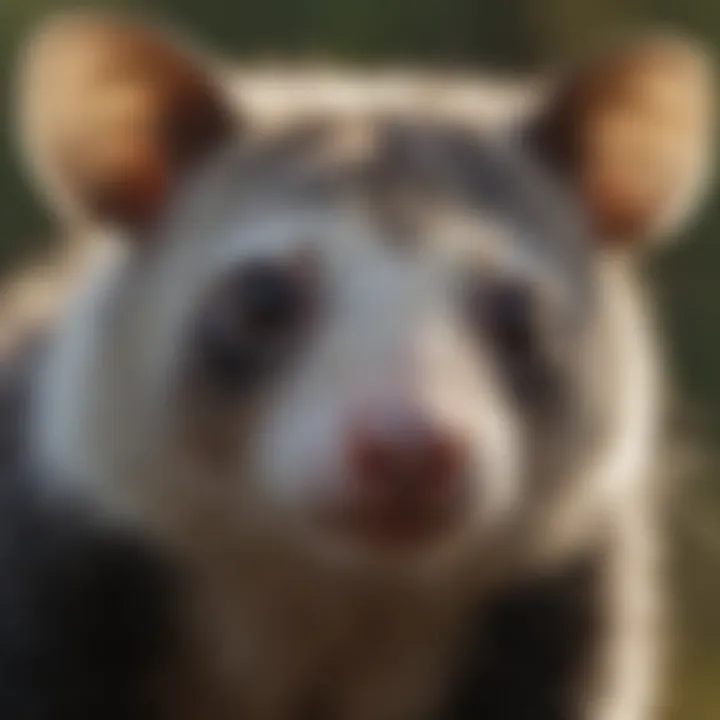
Opossums prefer varied habitats and are commonly found in forests, fields, and even suburban neighborhoods. They are very adaptable and can thrive in settings where food sources, like leftover pet food or trash, are available. Their choice of habitats greatly influences their proximity to human dwellings. It’s key for homeowners to recognize that providing a suitable environment can attract these animals but also encourage positive interactions.
Distribution and Habitat
Geographic Range
Opossums are native to North America, with a range extending from southern Canada to central Mexico. They have successfully adapted to many environments across this vast geographic area. Their distribution means that homeowners in various regions encounter them regularly. Understanding this range aids in developing localized strategies for living with or managing these creatures effectively in yards and gardens.
Urban Adaptation
Opossums exhibit remarkable adaptability to urban life. They tend to frequent areas with plentiful food sources, which mostly include human refuse. Their ability to thrive in urban environments influences local biodiversity. Learning about the compatibility of opossums with urban settings can help residents appreciate what these animals bring to the ecosystems within city boundaries.
Behavioral Patterns
Understanding the behaviors of opossums is crucial for homeowners. Their patterns reveal insights into how to coexist with them harmoniously. Opossums have distinct habits that influence their interaction with human environments. This section explores their nocturnal activity, dietary preferences, and social structures. Insight into these patterns can help in appreciating their ecological role while also addressing possible concerns for property owners.
Nocturnal Habits
Opossums are primarily nocturnal. They are active at night, seeking food and exploring their surroundings. This behavior means they are less likely to be seen during the daytime, often leading to misconceptions about their presence. Their nocturnal nature allows them to avoid predators and participate in activities when competition for food is low.
Most opossums venture out at dusk. They seek shelter and safety during daylight hours. Their nighttime activity is significant, as it keeps them safe while allowing them to fulfill their behavioral needs. For homeowners, it also means that opossums are less likely to cause disturbances during the day, which is often a priority for people looking to maintain a peaceful home environment.
Diet and Feeding
Opossums are opportunistic eaters. Their diet consists of a variety of foods which influences their role in local ecosystems. Here, we examine their omnivorous nature and scavenging behavior to understand how these eating habits benefit homeowners.
Omnivorous Diet
An opossum's omnivorous diet makes them adaptable. They eat fruits, insects, small animals, and leftover human food. This dietary flexibility helps maintain the ecological balance. One key characteristic of this diet is the ability to consume pests that may harm gardens or homes.
This adaptability is beneficial for gardens. With their penchant for eating ticks and cockroaches, they can assist in pest control. However, relying on opossums for pest control should not replace other measures. Proper care should be taken to ensure that they do not become reliant on human food sources, as this can lead to undesirable behaviors and health risks.
Scavenging Behaviors
Scavenging is another characteristic of opossums. They often feed on carrion and leftover food. This behavior is essential for the ecosystem. By consuming decomposing matter, they help in the nutrient cycling process. This unique feature aids in keeping the environment clean and reduces waste.
For homeowners, having opossums around may lessen trash problems. However, it is important to ensure trash is secured, or opossums may become too comfortable around human dwellings. While their scavenging habits can seem beneficial, they come with the risk of potential attraction to garbage, which can lead to unwanted visitors.
Social Structure
The social structure of opossums is largely solitary. Understanding this can help homeowners know how to manage their presence. Their social interactions primarily revolve around mating and territorial behaviors.
Solitary Lifestyle
Opossums are mostly solitary creatures. They prefer living alone, which reduces competition for resources. This solitary lifestyle means they do not form packs. This aspect can be beneficial for homeowners, as it indicates that only a few might inhabit a given area at a time. Less competition can mean less conflict in communal living spaces.
However, their solitary nature does mean they can sometimes become stressed when forced together in crowded scenarios. Despite this, their independence contributes to an overall peaceful coexistence with human populations.
Reproductive Behavior
Opossums have unique reproductive behaviors. They breed once or twice a year, resulting in multiple offspring. After a short gestation period, babies continue to develop in their mother’s pouch.
This reproductive strategy proves advantageous for the species. It ensures population stability while minimizing competition. However, the presence of multiple young opossums can result in energy and resource strain in certain habitats. Homeowners should be mindful of this during breeding seasons and consider their surroundings when managing wildlife populations in their area.
Ecological Role of Opossums
The ecological role of opossums is significant, particularly in urban environments where they often reside. Recognizing their contributions is vital for understanding how these marsupials impact our ecosystems. Opossums are often misunderstood, yet they play essential roles in maintaining ecological balance, often serving as a natural method of pest control and contributing to nutrient cycling within their habitats. Their presence in your yard may initially seem alarming, yet it can provide various benefits that promote a healthier environment.
Pest Control Benefits
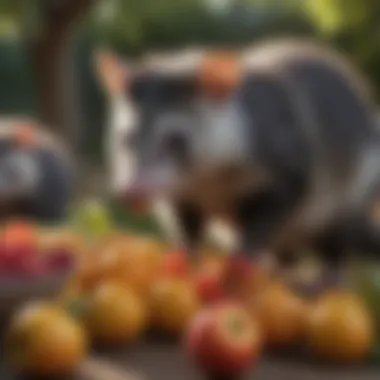
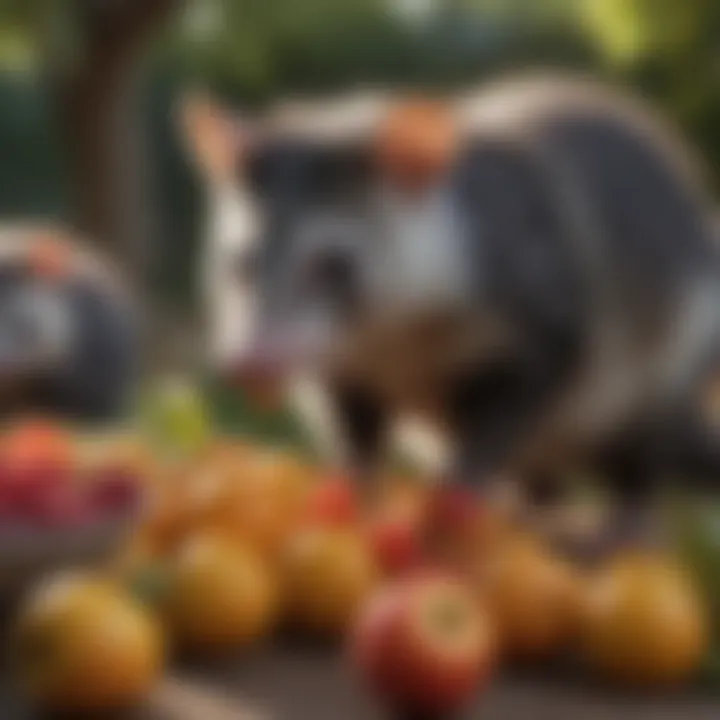
Insect and Tick Consumption
Opossums consume vast numbers of insects and ticks, making them effective pest controllers. One of the key characteristics of their diet is omnivorous behavior, which allows them to adapt well to urban settings where pests thrive. Their ability to consume these pests not only helps in controlling unwanted insect populations but also decreases the likelihood of tick-borne diseases, which can affect humans and pets.
A unique feature of their consumption pattern is their immunity to certain diseases, such as Lyme disease, which ticks can carry. This immunity means that even if they consume infected ticks, the risk of disease transmission remains low. Thus, having opossums around can be a beneficial choice for homeowners looking to maintain a clean and healthy yard.
Ecosystem Contributions
Nutrient Cycling
Nutrient cycling is another critical aspect of the ecological role of opossums. They contribute to the breakdown of organic matter, aiding in the return of essential nutrients to the soil. Opossums get involved in decomposing waste materials, helping to ensure healthy soil conditions for plants. This process is crucial for sustaining local flora, ultimately enhancing the ecosystem's overall health.
The key characteristic of nutrient cycling is its promotion of a fertile environment, which benefits all life forms in that ecosystem. A significant advantage of such contributions is the promotion of biodiversity, helping various plant species to flourish. However, it's important to control wastage and debris to maximize the benefits of this cycling process.
Seed Dispersal
Seed dispersal is another valuable service provided by opossums. They eat fruits and berries and often relocate the seeds away from the parent plant. This behavior assists in the growth of new plants in different areas, which contributes to greater plant diversity and stability within the ecosystem.
The prominent feature of seed dispersal by opossums is their ability to thrive in suburban and rural environments, where they can find abundant food sources. This characteristic makes them popular figures among wildlife enthusiasts who appreciate their role in supporting plant communities. One of the advantages of this service is that it helps restore plant populations and maintain healthy landscapes, although it can also lead to increased competition among plants for resources if not managed properly.
"Opossums are not just scavengers; they are active participants in the health of our ecosystems, making their presence a potential asset rather than a nuisance."
Understanding the ecological roles of opossums offers a deeper perspective on their value to residential yards. They are not merely pests but beneficial creatures whose interactions with the environment can help reduce common issues such as invasive pest species while enhancing overall biodiversity.
Benefits of Coexisting with Opossums
Opossums hold significant ecological value that is often overlooked by homeowners. Understanding their benefits can foster cooperation rather than conflict in residential areas. This section examines why living alongside these marsupials can be advantageous, with a particular focus on natural pest control and enhancing biodiversity.
Natural Pest Control
Opossums are natural pest controllers. They have a varied diet that primarily includes insects, small rodents, and even ticks. The presence of opossums in your yard can contribute to reducing pest populations. For example, they are known to consume up to 5,000 ticks in a single season. This makes them vital in areas where tick-borne diseases are a concern. Their role in managing these pests can significantly lessen the need for chemical pesticides, which can have harmful consequences for the environment and potentially for your family.
Furthermore, opossums often scavenge on dead animals, helping to clean the environment and reduce the potential spread of diseases. By allowing opossums to inhabit your yard, you essentially promote a natural method of maintaining a healthier ecosystem.
"Opossums can eat a significant amount of insects, ticks, and other pests, making them excellent partners in maintaining garden health."
Biodiversity Enhancement
The presence of opossums also contributes to biodiversity in local ecosystems. Opossums can cohabitate with diverse forms of wildlife. They help maintain the balance in the food web by serving as prey for larger predators. This ecological interaction is crucial for sustaining predator populations and promoting a healthy environmental balance.
In addition, opossums aid in nutrient cycling. As they forage for food, they inadvertently spread seeds through their droppings. This process can lead to the growth of new plants and contribute to a more vibrant garden landscape. A diverse plant life can attract various bird species and beneficial insects, further enhancing the ecosystem.
In summary, coexisting with opossums provides significant benefits. Not only do they aid in natural pest control, but they also enhance biodiversity, creating a more balanced and healthy environment in your yard. By understanding their role and importance, homeowners can better appreciate these often-misunderstood creatures.
Potential Drawbacks and Concerns
The presence of opossums in a residential yard can bring several advantages. However, it is also important to address the potential drawbacks and concerns that may accompany these wild marsupials. This section explores two main areas of concern: property damage and health risks. Understanding these aspects allows homeowners to make informed decisions about how to manage their interactions with opossums.
Property Damage
Garden Impact
Opossums can have a notable impact on gardens. They are opportunistic feeders that may nibble on fruits, vegetables, and ornamental plants. Understanding the garden impact of opossums helps homeowners grasp how their feeding habits can influence the landscape. The key characteristic here is that these animals are often attracted to newly planted areas or ripe produce. Therefore, if you notice saplings or fresh produce disappearing, it might be due to opossum activity.
The unique feature of garden damage caused by opossums is that it may be sporadic. Unlike some other wildlife that can decimate a garden overnight, opossums may just leave a few signs of their presence. Yet, this can still be disheartening for gardeners who invest time and effort in their plants. Having measures in place to protect delicate plants can be beneficial in mitigating this concern.
Structural Considerations
Structural considerations involve the potential for opossums to seek shelter in your home or outbuildings. They can squeeze into small spaces, leading to issues that homeowners must address. The main point to highlight is that prevention is often easier than remediation. Having adequate barriers in place, such as secure vents and attic points, can deter opossums from entering unwanted areas.
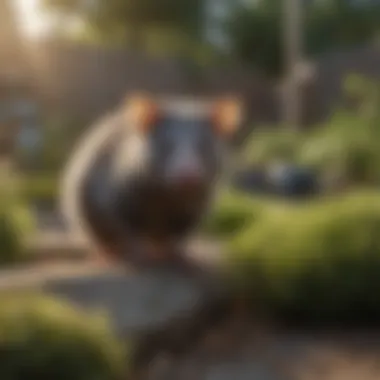
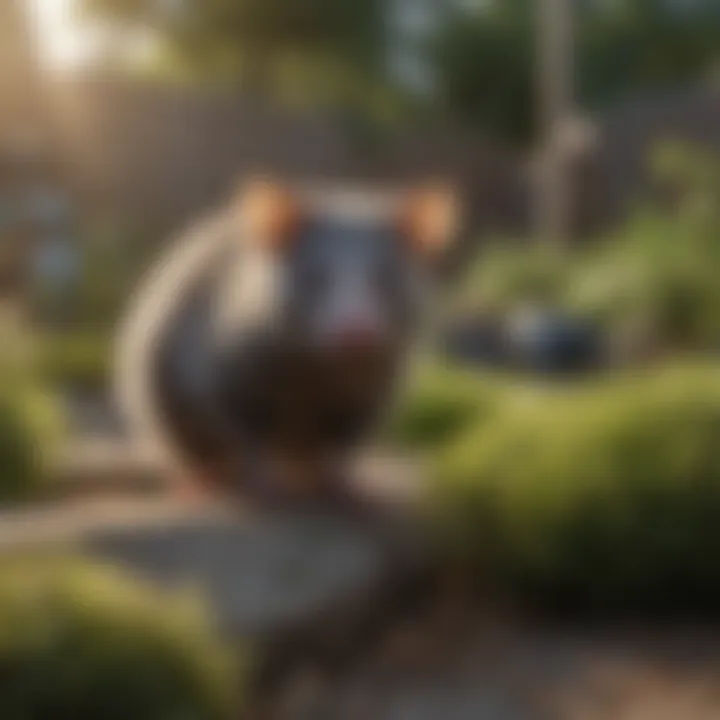
A unique aspect of structural damage can arise from opossums nesting in spaces like attics, sheds, or under decks. This may lead to not only physical damage but also noise disturbances. Such situations may add emotional stress to a household. This risk requires homeowners' attention and solutions to create a balance between coexisting and protecting their residences.
Health Risks
Disease Transmission
Disease transmission is another concern when it comes to opossums. While these animals are known to be generally healthy, there have been instances where they can carry diseases that might affect pets or humans. The key characteristic here is that opossums are often resistant to certain diseases, such as rabies. However, this does not eliminate the risk entirely. Being informed about potential health risks is crucial for residents who live close to these creatures.
The unique feature of disease transmission associated with opossums is the low likelihood of serious outbreaks. Proper health practices and an understanding of wildlife can mitigate fears. However, it is wise to take precautions, such as avoiding direct contact and sanitizing any areas where they have been active.
Parasite Concerns
Parasite concerns linked to opossums can also be an issue. Fleas, ticks, and mites may hitch rides on opossums and occasionally make their way into human habitats. Highlighting the characteristic nature of these parasites is essential, as they can affect both pets and humans alike. It's important to note that such instances are not universally common but can occur.
The unique aspect of parasite concerns is the cycle of infestation that can happen. Once opossums enter an area, they might introduce parasites that can become a nuisance. Therefore, regular maintenance of yards, such as removing debris and keeping the grass trimmed, can be an effective method to deter these infestations. Being proactive is a vital part of maintaining a healthy living space.
Managing Opossums
Understanding how to manage opossums is essential for homeowners who wish to maintain a harmonious relationship with these creatures. Opossums can contribute positively to the ecosystem, but they can also pose challenges. The focus will be on humane deterrent methods and proper removal and relocation strategies. The overarching goal is to ensure that interactions with opossums are handled in a way that is respectful to both the animals and the home environment.
Humane Deterrent Methods
Behavioral Deterrents
Behavioral deterrents play a pivotal role in managing opossums. These methods leverage the natural behaviors of opossums to discourage them from becoming a nuisance. For instance, using noise-making devices can effectively deter these animals from approaching certain areas. Another example is bright lighting at night, as opossums are nocturnal and prefer dark, quiet spaces.
The key characteristic of behavioral deterrents is their non-invasive nature. They do not harm the animal but instead encourage the opossum to avoid residential areas. This approach is widely seen as a beneficial choice for managing wildlife interactions. A unique feature of behavioral methods is their ability to be easily implemented without the need for specialized equipment. However, it is important to note that these deterrents may require ongoing adjustments and monitoring to remain effective.
Environmental Adjustments
Environmental adjustments refer to changes that homeowners can make to their property to discourage opossums from taking up residence. This includes securing garbage cans, removing food sources, and trimming overhanging branches that provide easy access to roofs and attics. By minimizing accessible habitat and food sources, homeowners can make their properties less attractive to opossums.
The key characteristic of environmental adjustments is their ability to create a less favorable environment for opossums. This method is seen as a long-term solution, as it addresses the underlying issues that attract opossums in the first place. A unique aspect of these adjustments is that they often benefit not only households by reducing opossum interaction, but they also contribute to general pest control. On the downside, implementing these adjustments may require a considerable initial effort and commitment, especially in ongoing maintenance.
Removal and Relocation
Legal Considerations
When discussing the removal and relocation of opossums, understanding the legal considerations is paramount. Many states have specific regulations regarding the management of wild animals. Homeowners should familiarize themselves with local laws to avoid penalties or inadvertent harm to wildlife. It is important to note that in some areas, it may be illegal to relocate opossums or any wildlife without a special permit.
The key characteristic of legal considerations is their complexity. Navigating these laws is a critical step in ensuring that any actions taken are lawful. Legal considerations are beneficial because they protect both the homeowner and the wildlife involved. Awareness of these laws can mitigate risks associated with mishandling wildlife. A unique feature of legal considerations is that they help foster a responsible approach toward wildlife management, encouraging adherence to ethical and sustainable practices.
Best Practices
Best practices for the removal and relocation of opossums emphasize humane methods. This includes hiring trained wildlife removal experts who can relocate opossums safely and legally. It is vital for homeowners to ensure that any animal removal practices do not endanger the opossum or violate local laws concerning wildlife.
The key characteristic of best practices is their focus on humane solutions. This emphasis makes them a popular choice among environmentally conscious homeowners. A unique feature is that these practices can include community programs or partnerships with local wildlife organizations. This collaboration can also enhance community awareness about the importance of coexisting with local wildlife. However, the potential downside is the financial cost associated with professional removal services, but this is often seen as a necessary investment in humane wildlife management.
"Understanding how to manage wildlife interactions fosters a greater appreciation for biodiversity in urban settings."
By considering humane deterrent methods and the legal implications of removal and relocation, homeowners can effectively manage their interactions with opossums. This approach not only maintains peace in residential areas but also respects the vital role opossums serve in the ecosystem.
Finale
In this article, we explored critical aspects surrounding the presence of opossums in residential yards. The content emphasized the ecological role of these marsupials, their behavioral patterns, and the potential benefits and drawbacks of coexisting with them. Homeowners often have concerns about wildlife, and understanding these creatures is essential for informed decision-making. Opossums contribute positively to the environment through natural pest control and nutrient cycling, making them a vital part of the ecosystem.
Summary of Key Points
To summarize the key points discussed:
- Opossums play a role in pest control by eating insects and ticks, which can help reduce disease vectors in yards.
- They are nocturnal creatures, influencing their interactions with human activity.
- The challenges they may present, such as property damage and health risks, should be balanced against their ecological benefits.
- Effective management strategies, including humane deterrent methods, can mitigate concerns without harming these animals.
- The importance of coexistence is paramount, as understanding and respecting wildlife can lead to better outcomes for all parties involved.
Importance of Coexistence
The significance of coexistence with opossums cannot be overstated. Respecting their place in the habitat fosters biodiversity, which is crucial for a thriving ecosystem. Homeowners should aim to develop a relationship with wildlife that honors each creature's role. By taking steps to accommodate these animals, individuals can create a healthier environment while ensuring personal safety and comfort. Living alongside opossums encourages a more harmonious interaction with nature, promoting education and awareness about urban wildlife dynamics. In this regard, it is not just about tolerating their presence but cultivating a deeper understanding of the balance that exists within our shared living spaces.







